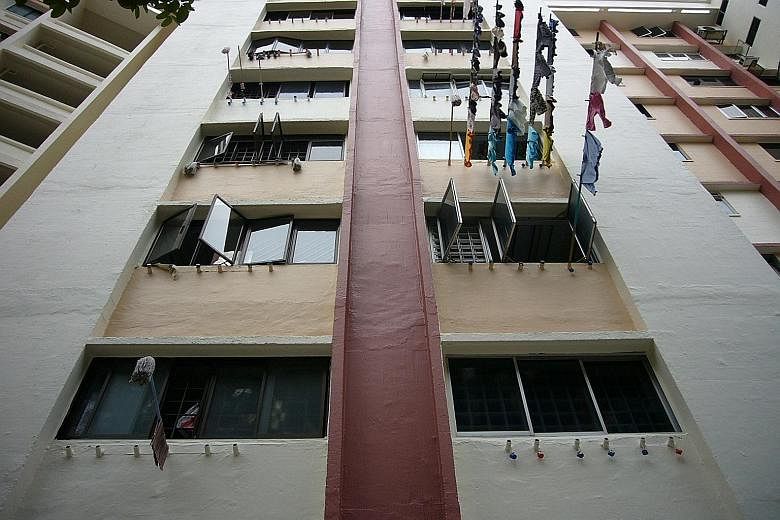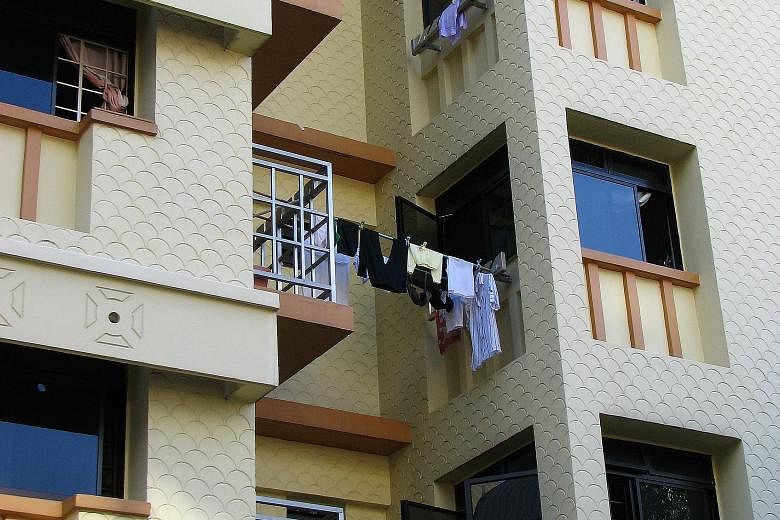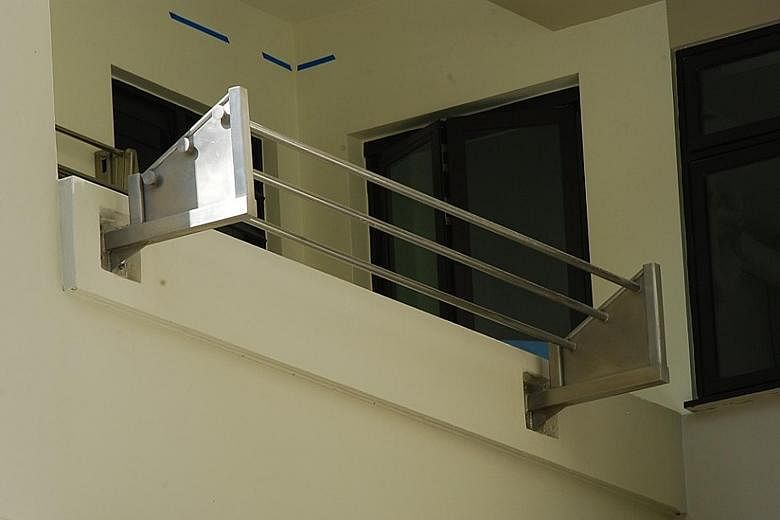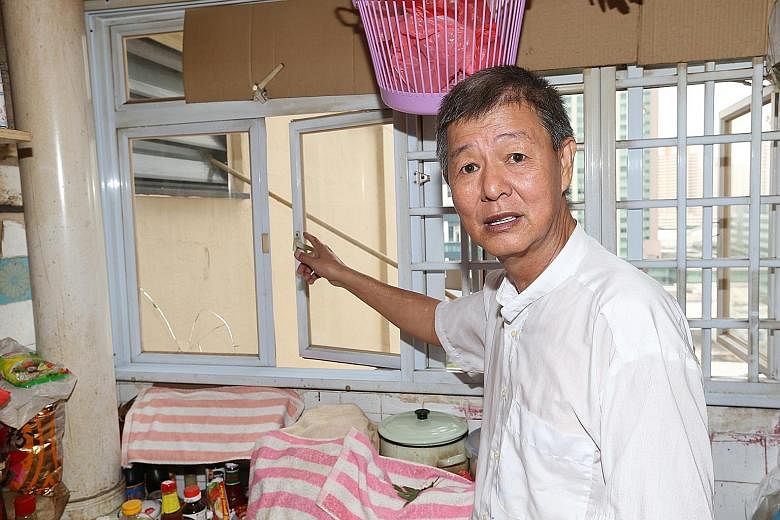Retiree Yeo Boon Kwee returned to his four-room flat one day last month and found glass splinters all over his bathroom floor. A bamboo pole from his neighbours' flat above had fallen off the clothes-drying rack and punctured the window of his bathroom.
Mr Yeo said this was not the first time his window had been broken by a flying bamboo pole. In April, a pole from his upper-floor neighbour's flate was also blown off by strong winds and smashed into his kitchen window.
Mr Yeo, 61, believes that the pole racks installed at Block 193, Lorong 4 Toa Payoh, where he lives, are to blame.

"The poles hit my rack, ricochetted and broke my windows," said the former Chinese physician. "I think the design of the pole holder is flawed. There is no locking system. I can even push out the poles with one hand, not to mention strong winds."
Mr Yeo's drying rack bears a T-shaped design found at many HDB blocks. The racks, which consist of two horizontal metal strips with grooves for the poles to rest on, were installed at his block in 2010 under the HDB's Home Improvement Programme.
Dislodged poles: Wrong usage, rack design likely causes
In 2011, a safety metal plate with holes was added to the rack after some residents reported that poles could be dislodged by strong winds, said the HDB in response to queries from The Straits Times.
Still, bamboo poles have since fallen from his block "many times" because of strong winds, said Mr Yeo.
Other residents who use the same type of rack echoed such safety concerns. Retired tennis coach Joseph Koh, 65, who lives a few floors below Mr Yeo, had one of his poles blown off earlier this year. "It pierced through the sheltered walkway roof below. It's very dangerous," he said.
Stay-at-home father Kent Koh, 41, who lives in the same block, said he does not allow his four sons to go near the playground downstairs because poles had fallen near the spot when the wind is strong.
To prevent his poles from dropping, retired technician Y.K. Li, 88, said he sometimes fastens them to the rack with string.
The HDB told The Straits Times that some residents at Mr Yeo's block were not using the drying racks correctly. "A few households had either used bamboo poles which were too short, or did not place the poles properly in the laundry racks," it said.
The HDB added that the pole that broke Mr Yeo's window last month was about 20mm in diameter, "much smaller than the 30mm diameter holes provided in the rack".
This makes the poles "more likely to shift under strong wind conditions", the HDB said, adding that poles with a 28mm diameter and a minimum length of 2.1m are recommended.
It said it would be distributing an information leaflet to residents of Block 193 to remind them on the "correct and safe usage" of the rack.
National Safety Council of Singapore deputy president Fong Kim Choy said both wrong usage and the design of the T-shaped rack could cause poles to dislodge.
One problem that could arise from usage is when a pole is not inserted into the safety metal plate, he said. The diameter and length of the pole also matter. "It can easily drop if it is too thin or too short."
But Mr Fong, 64, who runs a safety consultancy firm, said: "The design is not sufficiently foolproof.
"A strong uplifting and sustained wind can first dislodge the end of the pole from the retaining metal plate... and then lift the pole with its clothing off the racks."
Mr Fong suggested modifying the rack design, such as adding a stopper pin that runs through all the poles. Slotted sleeves could also be added at the far end of the rack so that poles cannot be dragged out by winds, he said. "It's important to address this because a flying pole is like a javelin," said Mr Fong. "It can be quite forceful and cause injuries or, worse, kill."







